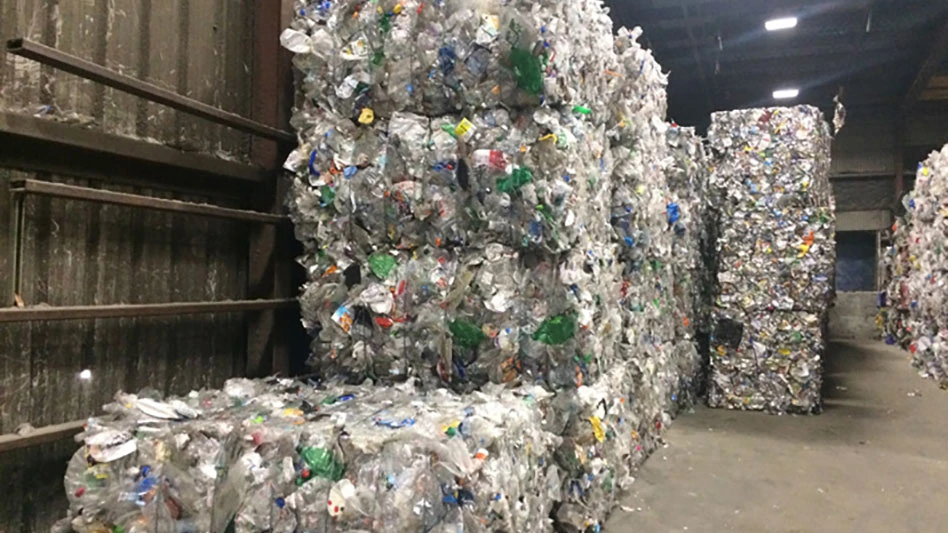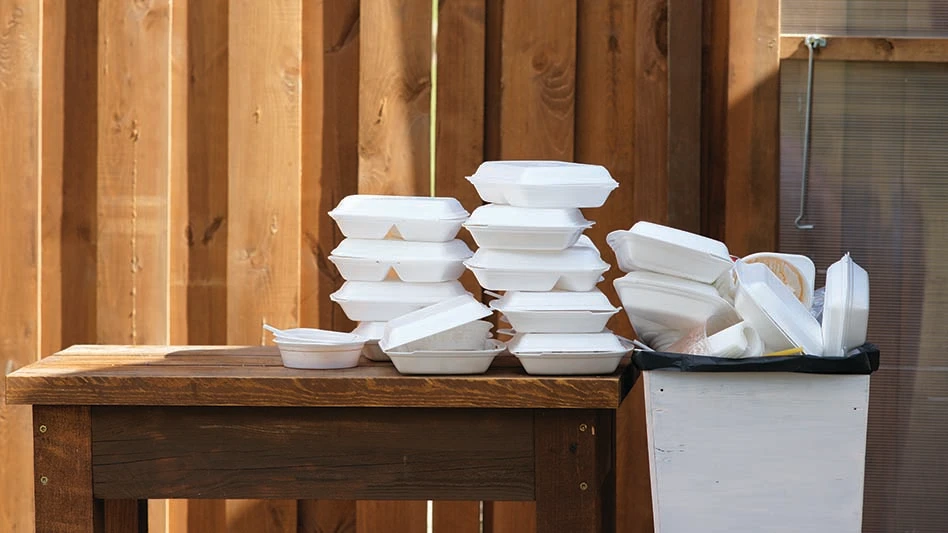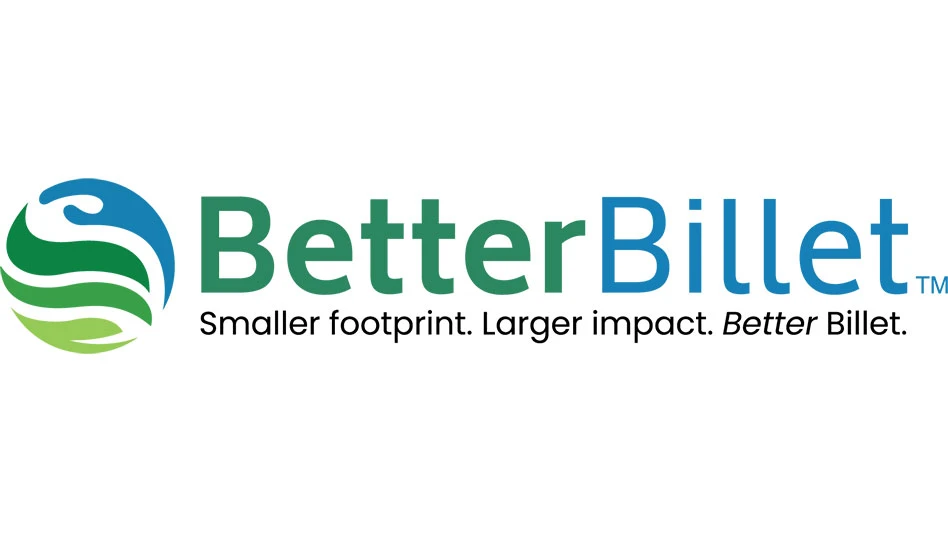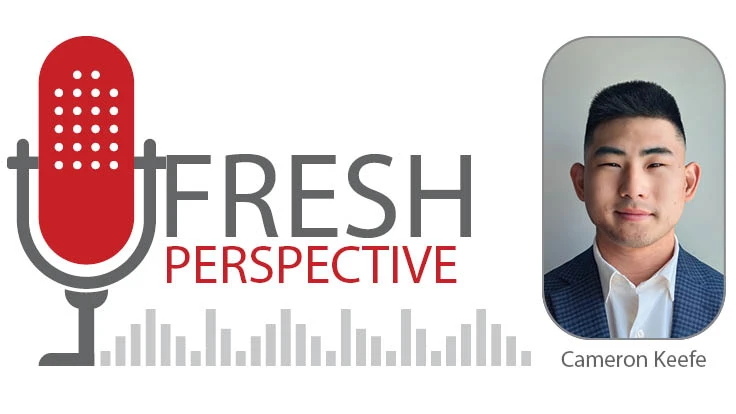
Recycling Today archives
Adam Estelle took on the role of president and CEO of the Copper Development Association (CDA), McClean, Virginia, in April of this year. Before rising to this post, Estelle served as the association’s vice president.
As he takes the helm of the association, Estelle says he has three primary objectives, the first and foremost being empowering CDA’s members—primarily copper producers in the form of mining companies and fabricators that make copper sheets, tubes and wires—to build a stronger and more resilient copper supply chain. His additional objectives are helping members face challenges and opportunities with “sound data, leading intelligence and actionable knowledge” as well as connecting and engaging the copper value chain to create meaningful impact that connects copper and CDA members to the market.
“We're working towards these objectives by promoting, protecting and defending the use of copper in the U.S.,” he says. “This involves aggressively listening to the needs of our members and the markets they serve and executing strategies that create real impact and value.”
He adds that CDA's mission to bring copper’s value to society means the association needs to go beyond talking about the issues to acting and showing results.
“I am fortunate to have a strong team in place that is well-versed in tackling complex market issues with different skills and tools, from advocacy to technical research to standards development and engineering support,” Estelle says. “My goal is to support the team and our members to help CDA reach its full potential.”
Estelle shares more about his vision for the CDA and how the organization is working to build a stronger and more resilient copper supply chain in the following Q&A.
Recycling Today (RT): At ISRI2024, you mentioned that CDA’s members are increasingly interested in scrap and recycling. How has that changed over time and what is driving that interest?
Adam Estelle (AE): Scrap has always been important to our members as recycling is in their DNA and is a core component of their businesses. There are different external drivers now that are changing how we talk about scrap, such as increasing inquiries from OEMs [original equipment manufacturers] regarding recycled contents in copper products. There is a lot of interest in finding alignment on terminology and best practices for how we calculate and communicate recycled content as an industry.
The new greenfield secondary projects in the U.S. are also driving a lot of interest as it's changing the landscape and bringing new and exciting recycling capabilities to the region.
Through our Scrap & Recycling Council, we've created an engaged forum of industry leaders that bring forward recycling challenges and opportunities and guide CDA in terms of which issues are addressable and worth pursuing collectively.
RT: Why does the CDA believe it’s important to facilitate collaboration between scrap buyers and sellers? How is the association facilitating this?
AE: Copper is the metal of electrification and is taking center stage in the energy transition. We're going to need a full value chain approach to rise to the occasion, and that starts with opening a dialog with different parts of the chain that each have an important role to play in getting metal to market.
Scrap buyers and sellers have different vantage points, and markets are dynamic. Technologies and product designs are evolving faster now than they have in the past, so we'll be facing new recycling challenges. As copper is critical to so many applications, collaboration between scrap buyers and sellers is key to protecting the quality and economic value of our recycling stream.
We're facilitating this by directly engaging with ReMa [Recycled Materials Association] and recyclers on specific issues and initiatives that we believe will create mutual value for buyers and sellers. If one part of the chain is under stress, the overall performance and efficiency of the system suffers. It's important to keep the line of communication open to get in front of issues that can negatively impact both sides as we all work towards creating a more circular and sustainable copper ecosystem.
RT: How can the value chain better work together to use more of the copper scrap generated in the U.S. so that less of it is exported and less refined copper is imported?
AE: Working together to use more of the U.S.-generated scrap that we currently export starts by taking a step back and appreciating what is at stake for the U.S. economy and our ability to achieve our domestic policy goals. If we want to electrify transportation, build more data centers, replace hazardous lead service lines for drinking water, strengthen the U.S. manufacturing base and so on, we're going to need more copper, and every unit counts. It is not a zero net sum situation as increased scrap retention and recycling alone will not be sufficient to meet our supply needs. We're going to need more recycling, more domestic mining, and we'll still need to import refined copper to secure our future supply.
There are significant amounts of high-grade copper scrap leaving the country that can be recycled by U.S. manufacturers, which would also reduce carbon emissions from overseas shipments. On the other hand, we are also exporting an even larger volume of complex alloy scrap for which we currently lack local processing capacity and capabilities. If we can come together and find solutions to process and recycle that material here, there are huge opportunities for job creation and manufacturing growth that will contribute to a stronger and more resilient U.S. economy and copper supply chain.
RT: In terms of the material flow models CDA is working to develop, how can they help improve diligence on the recycling narrative and indicate missing recycling opportunities?
AE: Flow models provide good directional guidance on where there might be opportunities or blind spots in our recycling story. Copper and copper alloys are used in so many different applications and industrial sectors, and many copper products have very long service lives. It's impractical to track every pound, but we need to have a good handle on our metal flows, which can help guide market actors to increase copper scrap collection and recovery rates and help us further close the loop.
RT: How would you characterize contamination in red metals scrap in terms of its prevalence and the nature of that contamination? What impact does this have on consumers of recycled material, and how can consumers and recyclers better work together to ensure incoming metal packages meet their needs?
AE: Contamination in scrap is an unavoidable reality and something buyers and sellers continuously work on to ensure the delivery of high-quality scrap and mill products. Some operations have refining capabilities, and some do not, so what causes contamination issues will vary from operation to operation.
Contamination does have significant impacts on scrap consumers, both on the front end with inspection and testing costs and on the back end with contaminants that are not detected and result in furnace issues such as off-spec heats. CDA's Semis Scrap Contamination survey has helped bring more light to contamination issues and what they look like across the industry and different product forms.
In terms of cost impacts, respondents to our last survey indicated that on average, it costs semis approximately $30,000 per month per company for inspecting and testing externally sourced scrap and approximately $60,000 per month per company to deal with furnace events caused by contaminated scrap.
We can work together by increasing participation in the contamination survey and letting the data guide us when we see an emerging contamination trend that might warrant a bigger conversation or the regrading of a particular scrap stream.
RT: Can you talk more about the two documents CDA is working to finalize this year on using hand-held XRF (X-ray fluorescence) devices to analyze red metals and collecting representative samples on copper and copper alloy-based scrap? What benefits do you expect to see as processors adopt these practices?
AE: The two documents are ASTM [International] standard guides that aim to outline best practices without being prescriptive about which practice should be used.
For the XRF guide, there was a realization that we did not have fit-for-purpose guidance on how to use this technology in the red metals space. Copper and brass mills using XRF devices developed their own tribal knowledge, and we saw value in documenting some best practices to help users better understand the capabilities and limitations of XRF on copper and copper alloy scrap for quality control purposes.
For the sampling of particulate scrap, the approach was essentially the same. There are many ways to sample chops, granules, brass turnings and similar types of scrap, and we saw value in documenting some of these best practices for transparency. When there is a dispute over a load, it will be helpful for buyers and sellers to be able to reference a standard guide to clearly communicate which method they followed.
RT: How would CDA describe its work so far to get copper added to the U.S. Geological Survey’s critical minerals list? What benefits could this provide to your members and copper recyclers?
AE: We started by replicating USGS's own methodology with current data to show copper already meets their inclusion criteria based on a calculated supply risk score. During the last list revision in 2022, USGS only considered data through 2018, and the situation has changed considerably. Rather than looking backward, USGS's Critical Minerals strategy should be forward-looking, like the methodology the U.S. Department of Energy applied to add copper to its separate list of Critical Materials.
Moreover, the USGS criteria currently only assesses supply risk and does not consider a mineral's importance to the economy and national defense. Copper has an enormous role on both fronts, and we are working to raise greater awareness to all the ways copper contributes to our economy and defense.
In terms of benefits, there is increasing acknowledgment on Capitol Hill of the need to support supply chains for critical minerals, which is essentially shorthand for "important minerals.” The immediate benefits would include the new Inflation Reduction Act EV tax credit for domestic content of critical minerals, automatic inclusion on the Biden administration's Permitting Dashboard to speed permit approval process and other support for mine exploration, trade remedies, government purchases, etc.
U.S. Critical Minerals strategy aims to support supply chains. Recyclers are a vital part of the copper supply chain and would also benefit from copper's inclusion on the USGS's Critical Minerals list.
Latest from Recycling Today
- MTM Critical Metals secures supply agreement with Dynamic Lifecycle Innovations
- McClung-Logan Equipment Company joins Tana’s authorized dealer network
- Grede to close Alabama foundry
- Plastics Recycling Conference 2025: Working toward their targets
- SWACO rolls out new commercial recycling and food waste programming
- Updated: Matalco to close Canton, Ohio, plant
- Metso launches electric Anode Weighing and Casting Machine
- Circular by Shapiro releases '5 for Five' sustainability series






